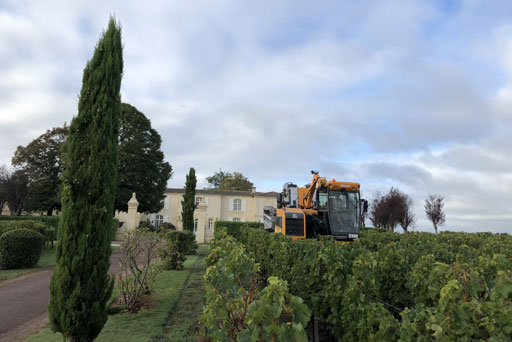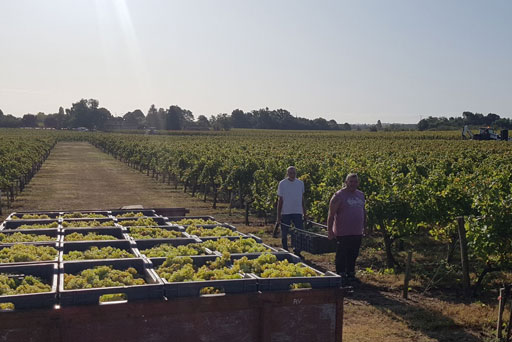Côtes de bourg
CHÂTEAU EYQUEM
This sprawling estate sits on 36 hectares of calcareous clay soil with a limestone underlay.
Composed of 60% Merlot, 30% Cabernet Sauvignon and 10% Malbec, the vineyard produces a bold and unique wine.
After the harvest, the grapes are vatted for 3 to 4 weeks under strict temperature control. It is aged in vats for 6 months, and then in oak barrels for 12 to 14 months.
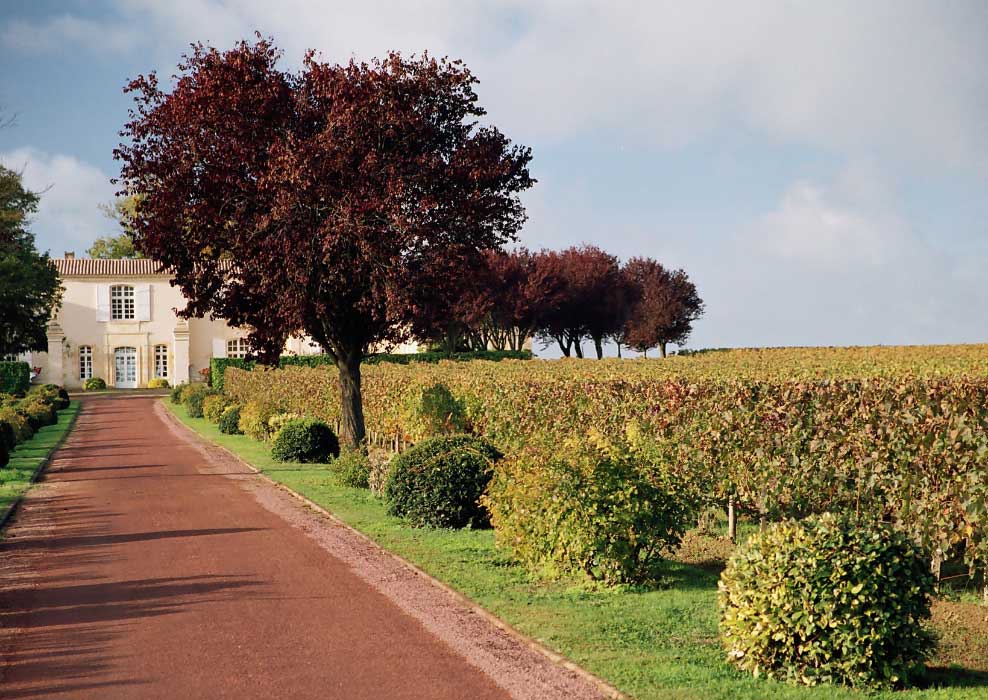
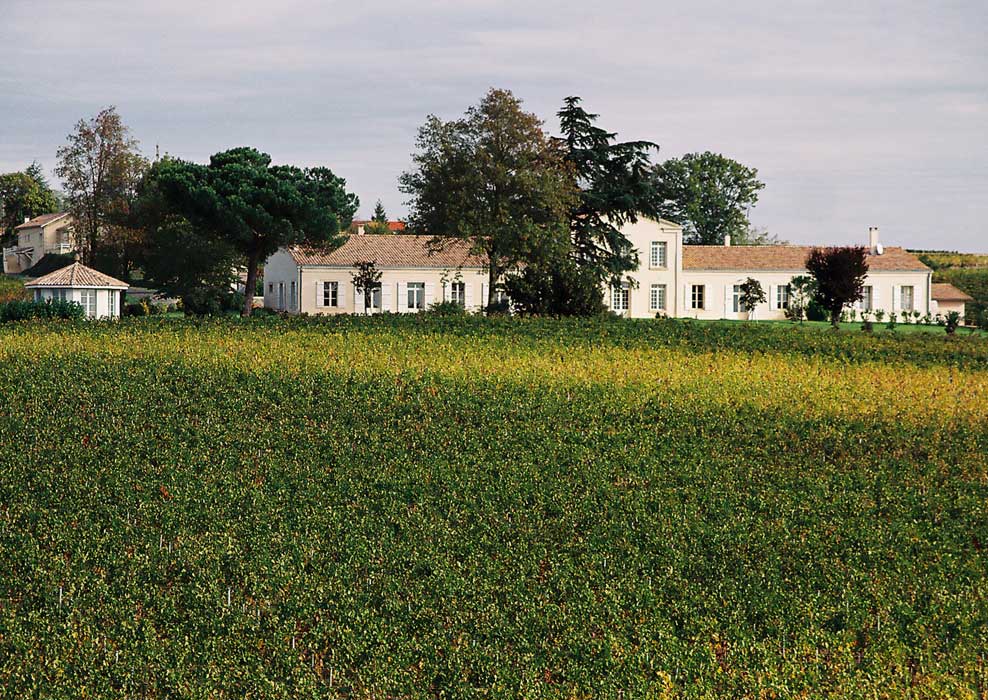
CHÂTEAU LANDREAU
This estate extends over 16 hectares.
Its soil, a combination of gravel, red gravel and silty clay, is a typical example of the unmistakable Côtes de Bourg terroir.
With 85% Merlot and 15% Cabernet Sauvignon, Château Landreau produces wines with a distinctive Côtes de Bourg fruity bouquet.
Following destemming, the grapes are fermented in stainless steel vats.
An automated regulation system controls the temperature in real time. After macerating for 2 to 3 weeks, the grapes are crushed using a traditional wine press.
The wine is aged in two phases: 6 months in vats, then 12 to 14 months in oak barrels.
Blaye Côtes de Bordeaux
CHÂTEAU BARBÉ
This 25-hectare sits on a calcareous clay soil with a stony underlay and its sun exposure is ideal for the grapes to grow and ripen.
The vineyard features 75% Merlot, 15% Cabernet Sauvignon and 10% Malbec, providing the ideal combination to craft bold and fruity wines.
After 3 to 4 weeks of temperature-controlled vatting, the wine is aged for 6 months in vats, before being moved into oak barrels for 12 to 14 months.
This traditional winemaking technique produces wines of character that are perfect for cellaring.
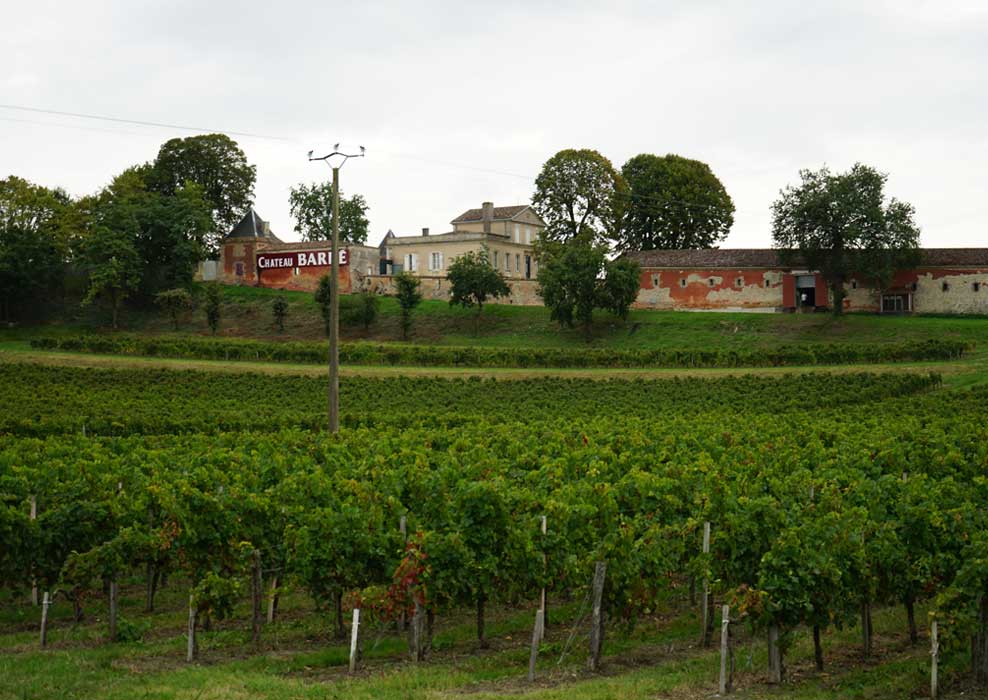

CHÂTEAU PARDAILLAN
The Château Pardaillan estate covers an area of 15 hectares.
The calcareous clay soil sits on a stony clay loam subsoil.
With 90% Merlot, 5% Cabernet Sauvignon and 5% Malbec the estate’s grape varieties make for woody and fruity wines.
The fermentation takes 3 to 4 weeks with an automated temperature control system to ensure its consistency.
Ageing takes place in two phases: 6 months in vats, then 12 to 14 months in oak barrels to give the wine its character.
CHÂTEAU LA CARELLE
The Château La Carelle estate covers an area of 27 hectares.
Its terroir is typical of the Blaye region, mainly clay-limestone and siliceous soil on clay subsoil.
The dominant grape variety is Merlot (60%). Cabernet Franc (30%) and Malbec (10%) make up the rest of the vineyard and help craft fruity and light wines.
Vatting takes place during 3 to 4 weeks, with a strict control of fermentation temperatures.
The wine is aged in vats for 6 months before spending 12 to 14 months in oak barrels.
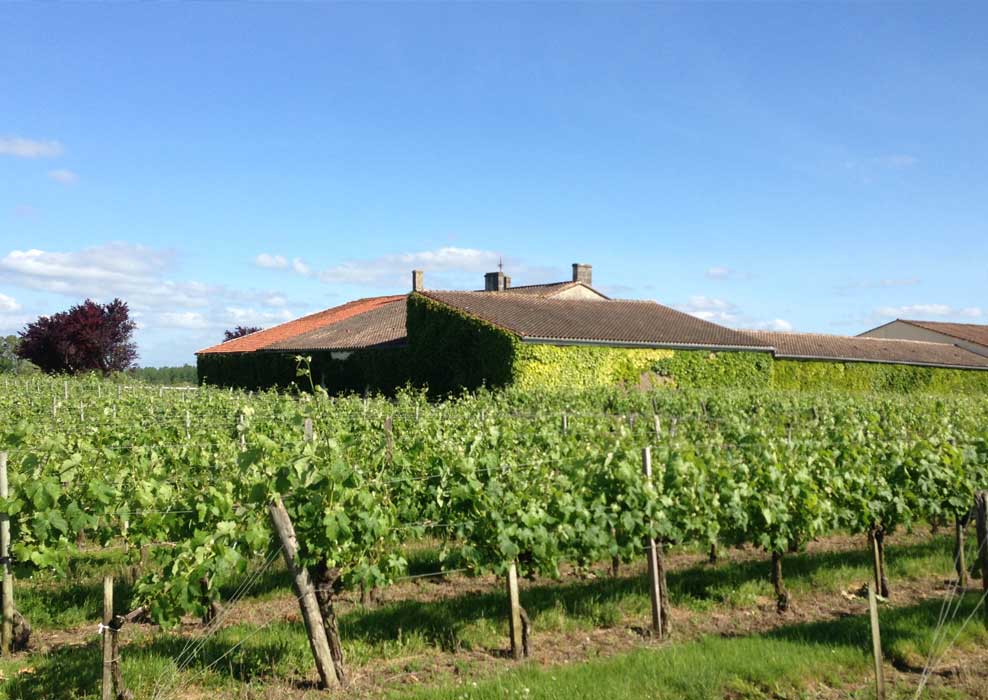
4 SEASONS
“Making a wine is a year-round job with defining moments for each season”
Winter
Pruning:
Unwanted parts of the grapevines are removed. One or two canes of varying length are left on the vines.
This step is crucial for the next crop’s success.
It determines the number of buds left on the vine for this year’s growing season and subsequent harvest.
Removing the wood:
The discarded twigs are removed and left on the ground.
Positioning:
Every vine is checked and positioned individually.
Vines are tied with a rope to wooden posts so they can support the weight of the grapes.
Secaillage:
The wires are retightened, the stakes are checked and broken stakes are replaced.
Folding:
Shoots are held along a carrier wire to keep the future bunches at approximately the same level for the harvest.
Wood shredding:
Discarded wood is shredded mechanically and the wood chips are used as compost for the vines after decomposing.
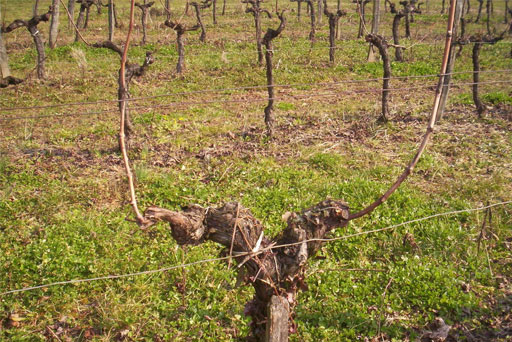
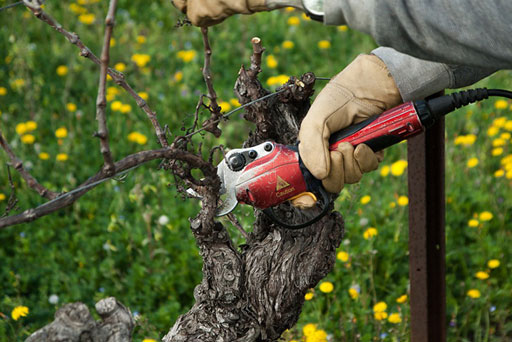
Spring
Young vines are planted:
Every year, vines that are too old or have shown signs of mortality are ripped out.
The land is left to rest for a few years, before planting young vines.
The first crops will come after 3-5 years.
The grape varieties planted are selected based on what new blends will be developed.
Ploughing:
The soil is ploughed with a mechanical plough. This is important for weeding and it also loosens and aerates the soil.
It allows deeper penetration for rainfall, enhancing the soil life.
Suckering:
Removal of all unnecessary shoots that have emerged on the vine
The shoots that are closer to the ground and its moisture can be a gateway for fungal diseases.
Their removal helps protect the vine and the year’s crop.
Vineyard pest and disease control:
The vines are sprayed against various insects and diseases to ensure the crop’s success.
Repositioning:
The shoots are pulled up and held between two wires.
This gives the vine a taller canopy and frees up space between the rows for the machines.
Trimming:
Shoots are cut back in order to prevent overcrowding and create more regular rows.
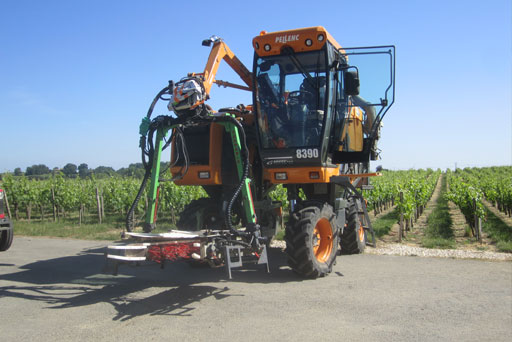

Summer
Soil maintenance:
The grass between the rows creates a green cover that retains water and soil moisture.
To keep it under control the grass is crushed regularly.
Vineyard pest and disease control:
The vines are sprayed against various insects and diseases to ensure the crop’s success.
Trimming:
Shoots are cut back in order to prevent overcrowding and create more regular rows.
Analysis before harvest:
All the plots are constantly monitored to keep track of grape growth and prevent pests and disease.
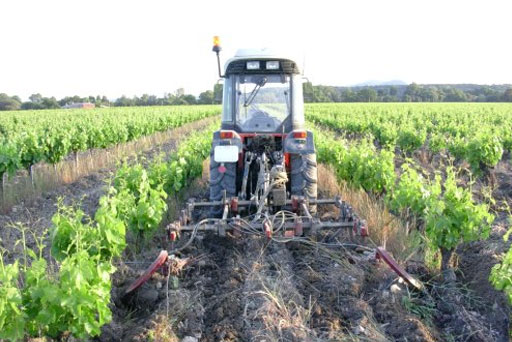
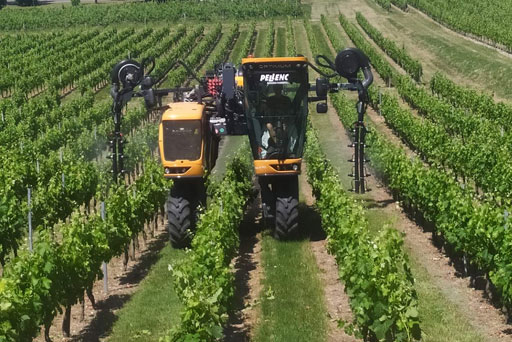
Autumn
Berry ripeness assessment and tasting:
PH and sugar levels in grapes are tested. The grapes need to be tasted regularly to set the perfect harvest date.
Harvest:
The culmination of a year’s work.
The grapes are picked and taken to the cellar to start the vinification process.
Soil recovery:
After the harvest, fertiliser is applied on the soil while it is still warm to help the vines regenerate before the grapevine’s winter dormancy and the next production cycle.
